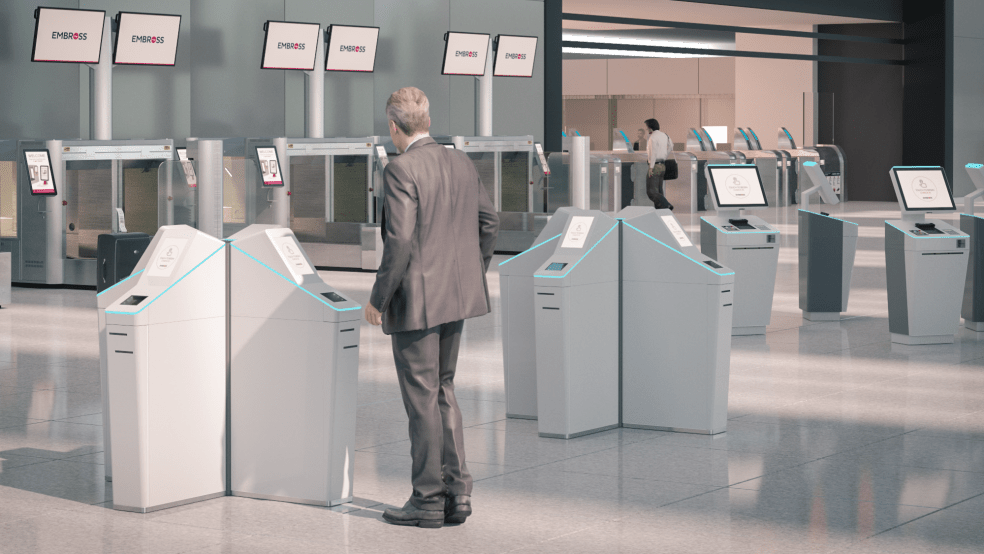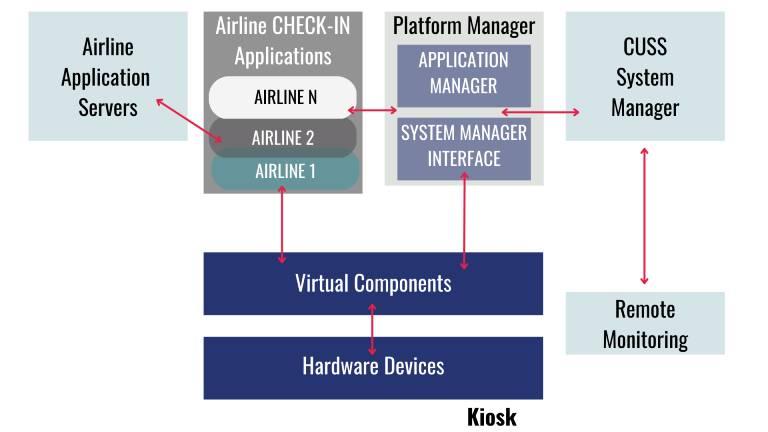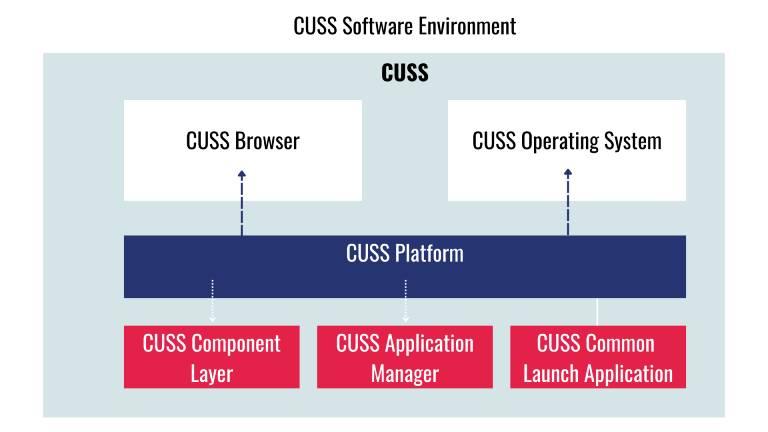
Introduction
Common use self-service standards (CUSS) have quickly become an integral component within the airline and travel industries, providing ease of access for customers, reducing hardware and maintenance costs while allowing airports to make better use of real estate. CUSS is of paramount significance for the aviation sector because it supports the optimization of passenger processes using shared technologies typically found at airports, but also seaports, hotels, and train stations.
If you are involved in a CUSS project, or are simply interested in learning more about CUSS, our latest blog is intended to provide you with an understanding of the latest fundamental aspects.
Background
IATA is leading the development and maintenance of global Common Use standards to build strong collaboration with partners and ensure interoperability between all stakeholders involved. Using a standardized approach will result in increasing the throughput and reducing the need for infrastructure expansion, benefitting airlines by reducing the integration with platform providers.
Given that needs and technology continue to progress, a new priority for airports should be planning for automation, helping to optimize operational efficiency, and building resilience into their operation. In the coming years, common use standards are going to play a significant role in providing increased capacity.
The CUSS 2.0 Standard
The CUSS standard has provided a framework and process for self service lasting nearly 20 years. The CUSS Technical Solutions Group (CUSS-TSG) has evaluated the current specification (including the technology it mandates, and decided it is now time for a completely new architecture and implementation of CUSS). This important migration not only abandons old and no longer supported technologies, but also introduces a new approach for developing CUSS platforms and applications for self-service touchpoints.
The CUSS 2.0 approach expands what can be considered a kiosk and how the “self-service experience” can be delivered to the passenger. The new approach allows the integration of smaller and mobile devices such as tablets and smartphones along with the traditional kiosk and bag-drop.
With the introduction of a WebSocket API (an advanced technology that makes it possible to open a two-way interactive communication session) and contemporary WEB-Services technology, airlines, airports, and third parties can efficiently and effectively develop modern CUSS applications. Application vendors can now make use of existing developer resources already accustomed to proven API and web development standards. By deploying newer technologies, secured communication protocols and practices allow the CUSS standard to align with the IATA Airline Industry Data Model/Open Air (AIDM)standard. As a result, this makes it effortless to comply with external standards and regional mandates(e.g., those defined by the card payment industry).
Some of the key targets of CUSS 2.0 include:
- Providing simplified specifications and documentation
- Keeping proven methodologies and operational processes
- Using current and contemporary technologies
- Introducing and mandating safe communication protocols (Security by Design)
Let’s now take a closer look at the CUSS hardware architecture.
Architecture Overview
CUSS Hardware Architecture
CUSS is a hardware abstraction layer–a CUSS device (SSK and/or SSD) is a combination of sub-devices (e.g., scanners and printers, PCs, and touch screens) located in a self-service environment. These devices are usually in an area that is also accessible for people with reduced mobility.
Platform providers offer the CUSS environment and interfaces for application providers to run their self-service application(s) in that provided shared environment.
A CUSS hardware environment consists of:
A self-service device offering passenger services, such as:
- Check-in
- Baggage tag printing
- Bag drop
- Security access
- Hardware devices accessed by CUSS applications through the interface defined in this specification
- Optionally specialized hardware to support passengers with disabilities
A CUSS environment offers standardized interfaces for the different hardware devices within the environment for the applications use. The following diagram describes a three-layered architecture:

CUSS Platform Software
The platform software is responsible for managing the entire CUSS system including:
- Providing an environment to host multiple airline applications
- Providing the interface layer for accessing underlying hardware components
- Command and control platform processes including applications
- Displaying common screens while no application is active
- Providing data and statistical information to the remote management system
- Management and publication of device states
Platform Software Environment
The only responsibility of a platform provider is to provide a CUSS compliant interface for applications’ use and to ensure that a Browser is available.

The Browser supplied within the CUSS Environment will provide:
- Compatibility to HTML 5.0 or higher specification
- Compatibility to ECMA Script ES 2015 or higher specification
What are the advantages of CUSS?
There are considerable advantages of implementing CUSS, including:
- Reducing processing time and increased throughput–CUSS kiosks can be distributed by multiple airline operators. Thus, they help to significantly cut down airport crowds.
- Greater flexibility and asset optimization.
- Reducing the labour cost of ground staff required by manual check-in. According to an IATA Annual Report from 2008, self-service check-in saved $1 billion USD.
- Further opportunities for growth–closer collaboration between airports and airlines.
- Security of access.
- It permits airlines deliver a proprietary self-service check-in product.
Looking to the future
It is abundantly clear that many airlines and airports have taken the lead and embraced the implementation of CUSS. When stakeholders reach an agreement to deploy a common use strategy, assets can be reorganized to benefit airlines, airports, ground handlers, and passengers.
To meet today’s IT security needs, CUSS application vendors are recommended to periodically deploy updates and security patches to their CUSS applications, the associated runtime environments, and libraries as well as the browser environments. Furthermore, CUSS application vendors may be required to perform updates on operators’ IT security policies.
As key contributors to IATA CUSS working groups, Embross has a progressive and active CUSS program. This ensures that the platform always reflects the latest standards from baggage self-tagging, accessibility, biometrics and more.
Embross provides the CUSS platform and application for self-service check-in solutions which complies IATA RP 1706 C for CUSS and the latest IATA technical specification. For more information on how to implement CUSS technology at your airport, contact a member of our expert team: 1-800-888-888
References:
[1] Babić, Ružica & Vidović, Andrija & Steiner, Sanja. (2003). The Implementation of Self Service Kiosks at Croatian Airports.
Authors:
Jamie Flinn, Software Support Manager & Omar Abbasi, Marketing Manager

